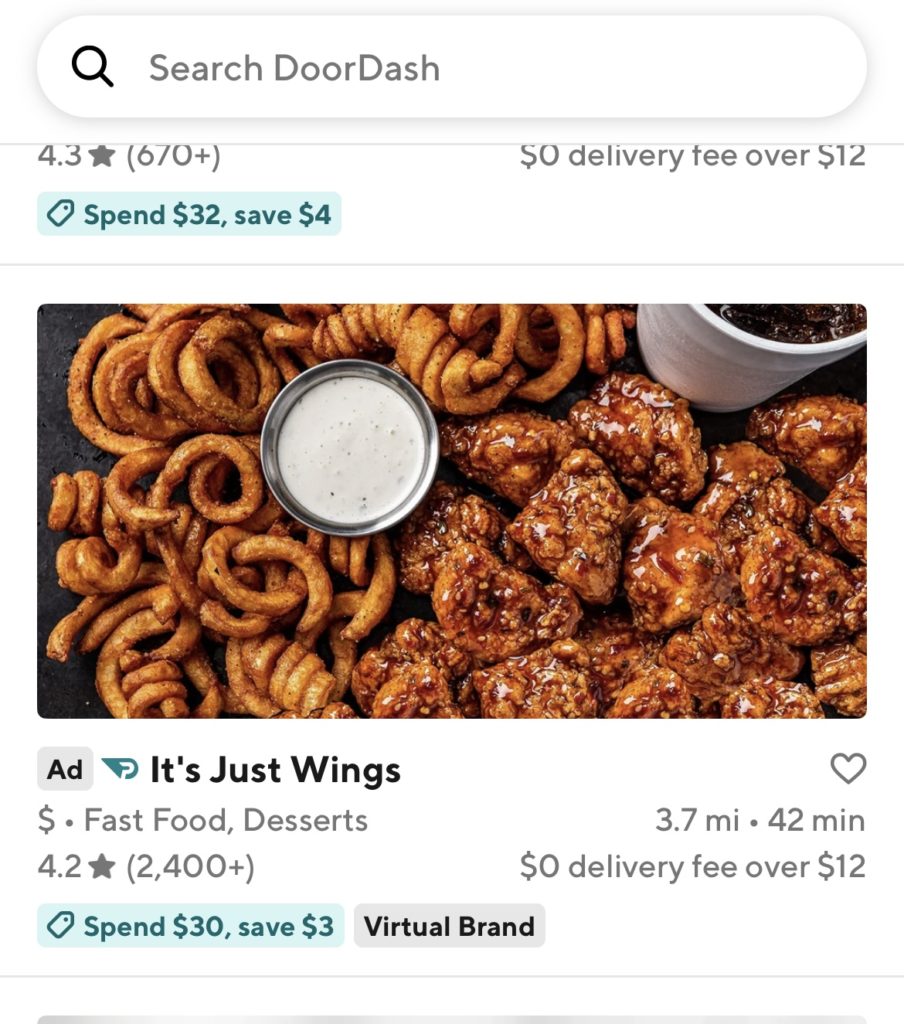If you’ve used food delivery apps like DoorDash or UberEats over the last few years, you’ll notice the number of restaurants on the platform has skyrocketed. And interestingly, they all seem to be offering the same types of cuisines. As it turns out, these platforms have become a battleground for testing virtual concepts. In 2021 there were roughly 10,000 virtual brands on UberEats but today that number is now 40,000.
For example, many probably don’t know that the brand below (It’s Just Wings) is owned by Chili’s and being produced in the same kitchens you would encounter if you were dining out at the chain.

Chili’s created this concept purposely to attract a new segment of diners without the potential impact of cannibalization to the restaurant’s brand.
In Colorado there are 12 virtual brands selling identical breakfast burritos which are all being produced at the same local sports bar and in NYC there are 14 brands serving the same sandwiches from a New York City deli on UberEats, the WSJ reported.
In a lot of ways, this feels like shopping on Amazon especially in the early days before there were clear guidelines for marketplace sellers. If you were trying to optimize conversion, you would use different copy, hero images, etc to test which asset led to the most conversion – and Amazon didn’t have the tools to track as closely as they do today. I once bought a weighted blanket on Amazon from one brand to then immediately see the exact identical product from another brand a week later. And this is even before accounting for rampant reselling on the platform. The same dynamic is playing out on the food delivery apps, who are essentially becoming the modern culinary equivalent of Amazon. Their vision is to be the virtual grocery store, restaurant and caterer nationwide. Restaurants have used this real estate as a testing ground to unlock new dayparts (for example a physical restaurant that only serves dinner, can now offer breakfast through the delivery apps). The challenge for consumers though is to sift through the litany of options to understand what truly is unique or exclusive.
Both Uber and DoorDash recently announced plans to clean up the number of brands on their platforms by instituting a variety of new requirements – a welcomed change. When I speak with restaurant operators who are trying to understand how to rationalize their portfolio on these platforms, I like to take a playbook from specialty retail who has done a great job over the years of building sub brands under a parent entity. Take for example Williams Sonoma, the iconic retailer is the parent company of other brands such as West Elm and Pottery Barn, all aimed at different customer segments but with a clear and articulated brand strategy.
Instead of trying to game search results, think about building a parent brand identity and then using sub brands aimed at different customer profiles. Not only will this start to give you relevance, but it can also help with cross selling your other concepts.
